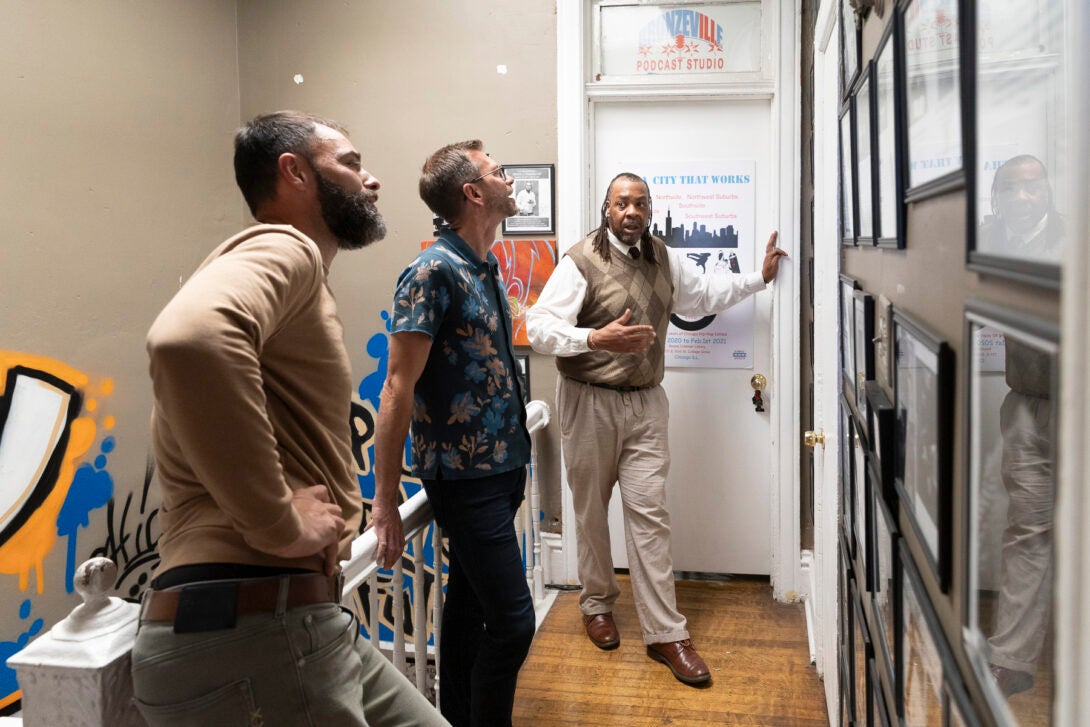Documenting Chicago hip-hop history
x

The story of Chicago hip-hop — its sound, its rappers and DJs, its culture and its fashion — is being archived and amplified thanks to a new collaboration between the University of Illinois Chicago music department and the Chicago Hip Hop Heritage Museum.
At the small museum in Bronzeville, the walls tell that story: four decades of hip-hop documented in photos, flyers, magazines, music videos and graffiti. Through the Chicago Hip Hop History project, researchers from the UIC music department will work closely with the museum’s founders to bring that story to a broader audience, using digital tools and databases.
“What we’re building is a database for searching and relating these entities together to create an authoritative archive of the history of Chicago hip-hop,” said Robert Difazio, clinical assistant professor at UIC. “The timeline would be one tool that anyone can put their hands on and learn about Chicago hip-hop music quickly and easily.”
That history goes deeper than many people realize, according to Carrico “Kingdom Rock” Sanders Sr., curator, docent and manager of the museum. In 1968, comedian Pigmeat Markham recorded what some scholars consider the first hip-hop song, “Here Comes the Judge,” at Chicago’s Chess Studios just 2 miles southeast of UIC.
x

Sanders and his co-founders Brian “Dj B.” Gorman and Darrell “Artistic” Roberts opened the museum in July 2021, on the 18th anniversary of Hip Hop Heritage Month in Chicago. Its collection was designed to highlight all facets of hip-hop culture: musical elements, such as emceeing and DJing, but also breakdancing, graffiti and fashion.
But the 1,700-square-foot space can’t tell the whole story, Sanders said. Enter UIC’s Difazio, a music industry veteran who is also head of research and development at Song Sleuth, a technology company that uses data science to find and claim music for publishers and record labels. He thought the museum’s collection could help fill gaps in widely used music databases, which often miss the depth of regional underground scenes like Chicago’s.
“With the modern research tools that data scientists use, if they wanted to study Chicago hip-hop, they really wouldn’t be able to do that right now. The system doesn’t exist,” Difazio said. “I thought the museum would be a great resource to solve the problem of music and artists that have slipped through the cracks.”
Beyond expanding the reach of the museum, these digital resources could also help with academic research and education, said Brent Talbot, professor and head of the UIC music department. Scholars could study the parallels between the lyrics of Chicago hip-hop songs and notable events and social justice movements in the city’s history. Music teachers could use the timeline or map to engage students with the music made in their own neighborhoods.
“We hope that teachers can utilize it as a resource for their students to think about what Chicago hip-hop is,” Talbot said. “What does it mean to reflect social conditions, and how do we use music to change the world? Those are big questions that we hope to help generate and facilitate.”
Sanders, who has been involved in the local hip-hop scene for decades as a rapper, manager and concert promoter, hopes the project will ensure that more people hear the music and learn the history.
“Hip-hop is the art of making something out of nothing,” Sanders said. “That’s really important in the process of what we want to teach the next generation. Chicago deserves its own story.”